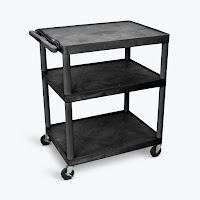Buying Guide: Transit Levels
Land surveying is no easy feat. Tons of calculations need to be done regularly, and the level of accuracy of a task can make or break a construction project.
With the right tools, however, land surveying can be a tad easier. And when it comes to plane surveying, a transit level is invaluable to any land surveyor.
Transit levels are precision optical instruments that help measure angles and determine the relative position of objects, points, and lines on vertical and horizontal planes. They’re often used on excavation sites, in building foundations, framing, and even landscaping.
With a transit level, professionals can have an easier time positioning objects in an area, getting accurate angular readouts, and drawing plans.
But with all the optical transit levels on the market, it can be hard to find the best one.
That’s why we’ve created a list of factors you have to consider when buying the best transit level. Whether you’re planning to get a transit level for the job or for personal use, you need to factor in these things:
Once you’ve identified the size of the job site, you can check for the transit level’s magnification and working range. High-quality transit levels typically feature 22x optical magnification, which allows you to sight objects as far as 200 feet while providing you with clear optics.
Besides that, you might want to consider getting a transit level with a built-in sunshade over its lens. This handy feature can prevent excessively bright outdoor conditions from affecting your view.
The standard accuracy of transit levels is ±1/4 inch per 100 feet—accurate enough for outdoor use or professional applications.
Apart from that, you have to check if the transit level features a continuous tangent drive. This component allows you to smoothly adjust the horizontal circle.
For accurate angle measurements, you also need to check if the transit level has a vertical arc and a vernier scale and graduations on its horizontal circle as well.
IP-rated transit levels typically come with IP54 enclosures, which means that they’re partially protected against dust particles and completely protected against water splashes from any direction.
When you do opt to get an IP54-rated transit level, you can clean it with a wet cloth without damaging the tool and use it on job sites with the presence of dust particles.
Ready to buy a transit level? Explore our collection of transit levels or check out our list of the best transit levels.
With the right tools, however, land surveying can be a tad easier. And when it comes to plane surveying, a transit level is invaluable to any land surveyor.
Transit levels are precision optical instruments that help measure angles and determine the relative position of objects, points, and lines on vertical and horizontal planes. They’re often used on excavation sites, in building foundations, framing, and even landscaping.
With a transit level, professionals can have an easier time positioning objects in an area, getting accurate angular readouts, and drawing plans.
But with all the optical transit levels on the market, it can be hard to find the best one.
That’s why we’ve created a list of factors you have to consider when buying the best transit level. Whether you’re planning to get a transit level for the job or for personal use, you need to factor in these things:
Magnification and Working Range
Before you buy a transit level, you have to consider the size of the area you’ll often work in. Will that area be a 1-acre lot or a 5,000-square-feet commercial lot?Once you’ve identified the size of the job site, you can check for the transit level’s magnification and working range. High-quality transit levels typically feature 22x optical magnification, which allows you to sight objects as far as 200 feet while providing you with clear optics.
Besides that, you might want to consider getting a transit level with a built-in sunshade over its lens. This handy feature can prevent excessively bright outdoor conditions from affecting your view.
Accuracy
As was mentioned before, accuracy can make or break a project. So another feature you have to look for when buying a transit level is its leveling accuracy.The standard accuracy of transit levels is ±1/4 inch per 100 feet—accurate enough for outdoor use or professional applications.
Apart from that, you have to check if the transit level features a continuous tangent drive. This component allows you to smoothly adjust the horizontal circle.
For accurate angle measurements, you also need to check if the transit level has a vertical arc and a vernier scale and graduations on its horizontal circle as well.
Enclosure
Planning to regularly use a transit level outdoors? Then you have to get one with an IP-rated enclosure. Ingress Protection (IP) ratings indicate the level of protection that a tool or machine has against dust and moisture.IP-rated transit levels typically come with IP54 enclosures, which means that they’re partially protected against dust particles and completely protected against water splashes from any direction.
When you do opt to get an IP54-rated transit level, you can clean it with a wet cloth without damaging the tool and use it on job sites with the presence of dust particles.
Accessories
If you don’t want to purchase separate accessories, you can choose to get a complete transit level package. Transit level packages usually include carrying cases for easy portability, tripods for level and stable platforms, and grade rods for accurate measurements of elevations.Ready to buy a transit level? Explore our collection of transit levels or check out our list of the best transit levels.

Comments
Post a Comment